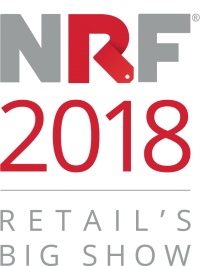
For more from NRF 2018: Retail’s Big Show on January 14 – 16 in New York City, visit the official recap.
Efficiency might be the newest buzzword in fashion. As social consciences rise, young companies and tech upstarts are helping the industry embrace new methods of designing, manufacturing and selling products. From zero waste faux fur to on-demand product, consumers — and companies — are interested in getting what they want as cleanly and ethically as possible.
“We all love fashion,” Karen Harvey said at NRF 2018: Retail’s Big Show. “But it’s hard today not to think about the waste that’s produced in an industry we love so much.”
Harvey, CEO of the Karen Harvey Consulting Group and founder of Fashion Tech Forum and INDX, spoke while moderating a panel on innovation in fashion; panelists included House of Fluff CEO and Creative Director Kym Carter, Ben Alun-Jones, co-founder and creative director of design platform Unmade, and Suzanne Lee, chief creative officer of Modern Meadow.
Cruelty-free fashion brand House of Fluff launched last fall to give everyone a “guilt-free fashion experience,” Carter said. The company sells faux fur outerwear and accessories, but its commitment to the mission goes beyond the main product lines — its one-of-a-kind collectible “Scrappys” are made from leftover material, and House of Fluff also manufactures its own garment bags and uses hangers and tags made from recycled plastic. The zero waste policy even extended to a recent pop-up shop, with fixtures constructed of automobile components like old mufflers.
“There’s a customer that’s ready for this type of product,” said Carter, who sold her collection of fur coats to finance House of Fluff. The brand, located in New York, makes all of its products in a local fair trade factory.
Unmade works with brands’ existing factories and logistics to facilitate on-demand, custom clothing; Alun-Jones said the business sprang from the realization that fashion was ripe for the responsive supply chain that exists in other industries. As consumers’ tastes have evolved into a desire for unique items, the business model “doesn’t really seem to be addressing this need very well,” he said, adding that some 10 percent of products made each season are unsold — even after discounts — and end up in landfills. “What’s being made isn’t tailored to what customers want,” he said.
Unmade uses digital technology to create a responsive supply chain — and deepen customer engagement. “It’s not design-your-own,” Alun-Jones said. “It’s the brand involving the customer in the design process, and creating this direct connection between customer choices and the factories to manufacture things.”
“We don’t just want to develop something that appears on the catwalk in the moment and is dropped. We’re developing materials that really can go into the supply chain for the long-term.”
Suzanne Lee
Modern Meadow
Efficiency doesn’t always mean speed: Modern Meadow’s bio-leather has a years-long development lifespan. The company, grounded in design, adds the elements of science and manufacturing to focus on the “decades-out” future of fashion, Lee said: Its engineering team designs cells to grow collagen through fermentation into a synthetic material called Zoa. It has the same building blocks as leather in nature, and only what’s needed is produced.
“We’re talking a fundamental material revolution where biotech starts to grow materials for fashion, but fashion wants it now,” Lee said. “Fashion doesn’t want to wait.” The brands Modern Meadow works with sign up for a three-year development timeframe. “We don’t just want to develop something that appears on the catwalk in the moment and is dropped. We’re developing materials that really can go into the supply chain for the long-term.”
Fashion’s cutting edge isn’t always on the runway. As changing consumer demands transform how the industry sources materials, predicting what’s in style is no longer just about the drape or color of a fabric. It’s in how fashion brands operate.
For more stories from NRF 2018: Retail’s Big Show, visit the official recap page.